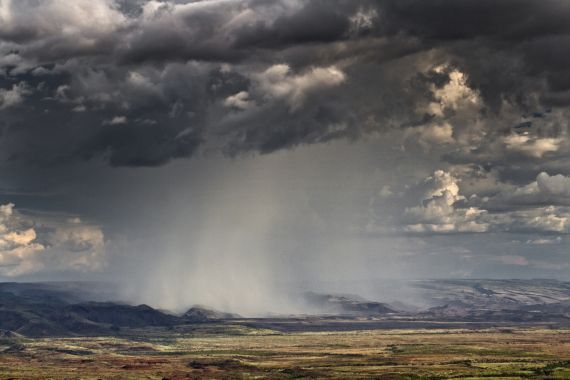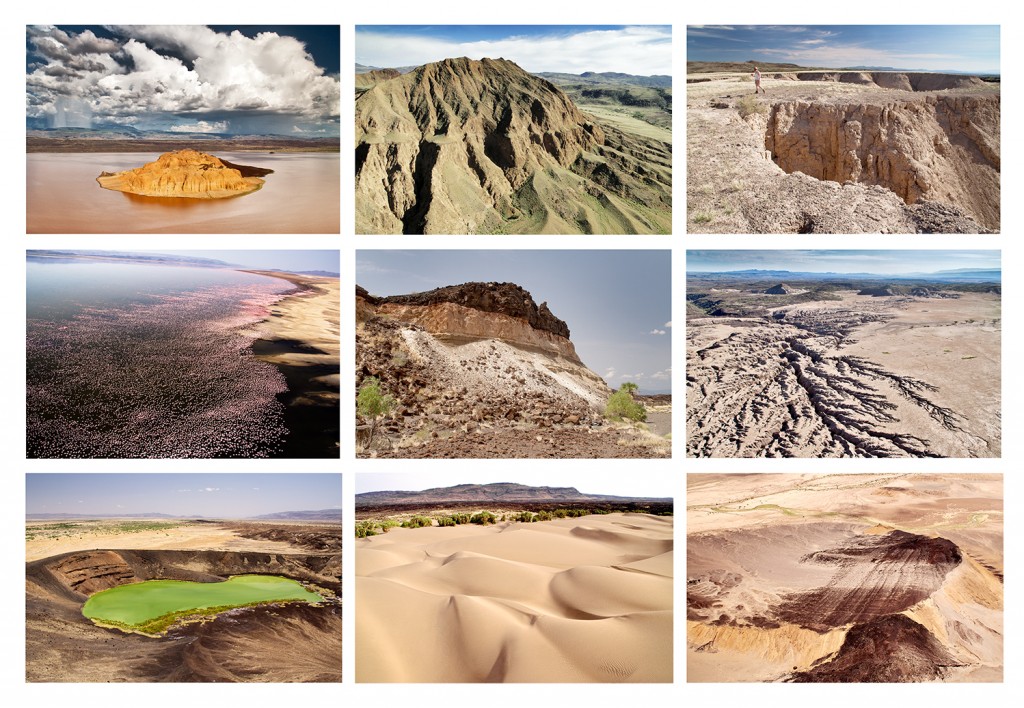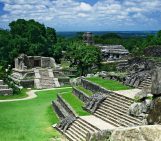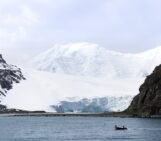Palaeoclimatologist Annett Junginger takes us to one of the hottest and driest places on Earth in this week’s Imaggeo on Mondays…

“Suguta Showers” by Annett Junginger, distributed by the EGU under a Creative Commons licence.
The picture was taken in 2010 during the third in six expeditions to the remote Suguta Valley in the northern Kenya Rift. This unbelievably beautiful place is located just south of Lake Turkana and is one of the hottest and driest places in equatorial Africa. Temperatures often reach 50°C in the shade, but there is no shade. Evaporation is so high that occasional rainfall over the valley escarpments only fills the rivers temporarily, and water often evaporates from the valley slopes faster than it can reach the deepest part of the valley to form a lake. Only during the rainy seasons there is enough water to allow the development of the small Lake Logipi (5 x 10 km across and approximately 3 m deep), which is a key destination for millions of Flamingos.
Due to the remoteness and hostile conditions of the valley, it is largely uninhabited, allowing the perfect preservation of all kinds of geological information. To make the most of this preservation, the Suguta Valley Project has been set up to investigate the valley’s late Cenozoic structural development and lacustrine deposits. The aim is to better understand environmental changes over the course of the region’s volcano-tectonic evolution and the climate fluctuations of the last five million years.

From left to right first row: Lake Logipi during the rainy season; a palaeo-shoreline 300 m above Lake Logipi approximately 10,000 years old (credit: M. Trauth); Lacustrine sediments of the same age. From left to right second row: Flamingos (pink dots) along the shore of Lake Logipi; Mid-Pleistocene lacustrine sediments; Erosion of Holocene lacustrine sediments. From left to right third row: Lake Eight, a maar lake in the southern part of the valley; Sand dunes in the foreground and palaeo-shorelines on the Namarunu volcano in the back; palaeo-shorelines on a small crater in the centre of the valley approximately 5,000 years old. (Credit: Annett Junginger)
It may sounds strange that lacustrine deposits can be found here, when the valley experiences such hot and dry conditions. But this is case! Palaeo-shorelines and up to 40 m thick lacustrine sediments are the remains of the huge palaeo-Lake Suguta, 300 m deep and 2,200 km2 large, that existed between 15,000 and 5,000 years ago – from a geological perspective, that’s not long ago at all! We also found lacustrine deposits up to 1 million years old that explain multiple humid periods in the past. The investigation of these palaeo-climate records may help to provide new insights into (1) the spatial and temporal synchronicity of the Early Holocene humid period in East Africa, (2) the role of the tropics in glacial-interglacial transitions during the Pleistocene, and (3) the links between climate changes and human evolution.
By Annett Junginger, Institute for Earth and Environmental Sciences, University of Potsdam
Reference:
Junginger, A., Trauth, M.H., Hydrological constraints of paleo-Lake Suguta in the Northern Kenya Rift during the African Humid Period (15–5 ka BP), Glob. Planet. Change (2013)
Imaggeo is the EGU’s open access geosciences image repository. A new and improved Imaggeo site will be launching soon, so you will be able to peruse an even better database of visually stunning geoscience images. Photos uploaded to Imaggeo can be used by scientists, the press and the public provided the original author is credited. Photographers also retain full rights of use, as Imaggeo images are licensed and distributed by the EGU under a Creative Commons licence. You can submit your photos here.



